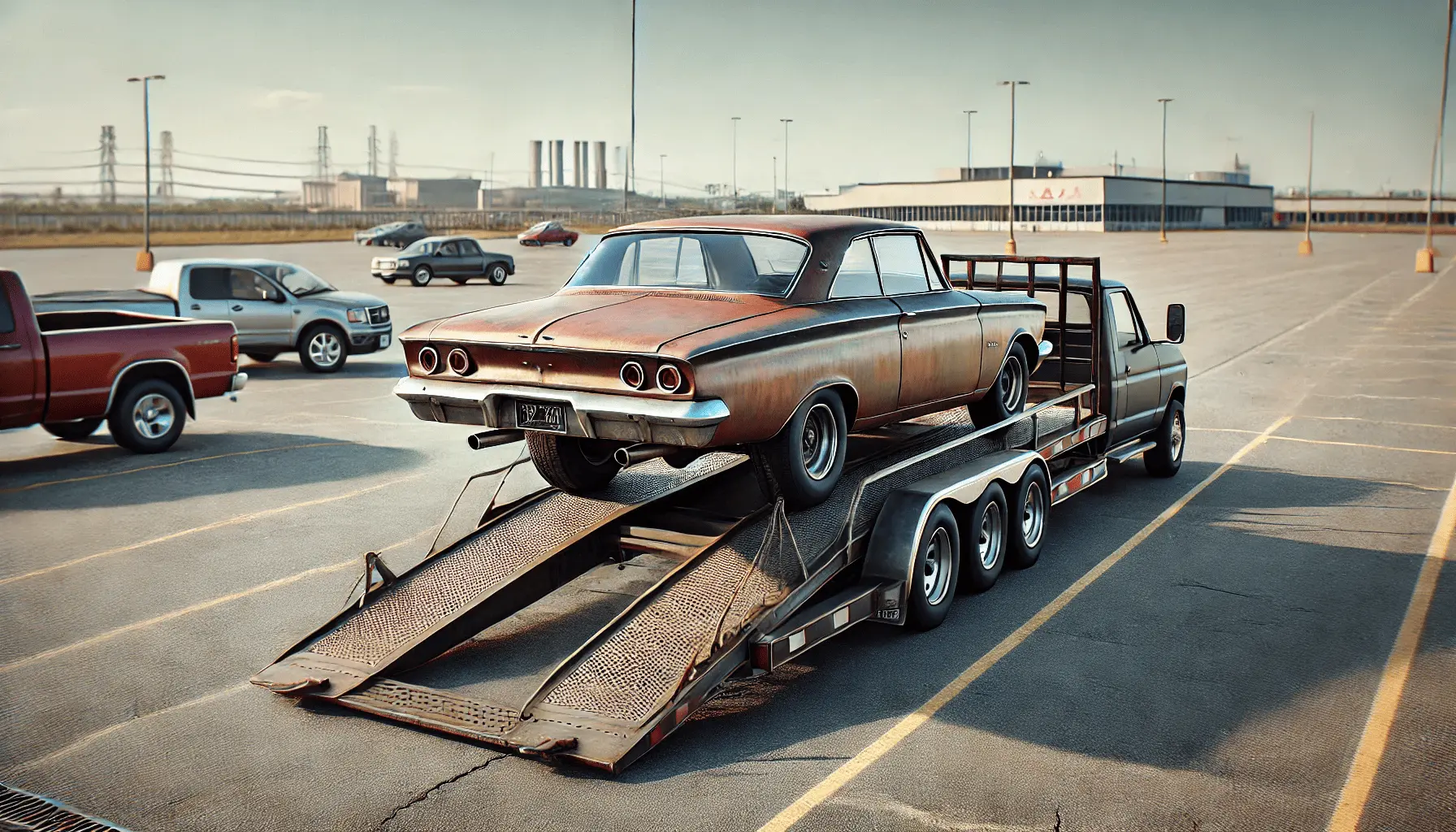The prospect of shipping a non-running car may appear daunting, but it is quite a popular practice with project cars, crashed cars, or even classic cars that have not been used for a long time. Given the fact that these cannot be driven up a trailer, the process implies more preparation, specific tools, and additional costs.
Key Takeaways
- Shipping a non-running car costs more. Expect an additional $100-$200 compared to running vehicles, due to extra equipment like winches, forklifts, or tow trucks needed for loading and unloading.
- Preparation reduces risk and cost. Securing loose parts, capturing time-stamped photos, draining fluids, and providing car keys help avoid loading issues and protect your vehicle in transit.
- Choose the right transport method for your vehicle. Open trailers are common and cheaper, but enclosed trailers offer better protection for project cars or classics. Terminal-to-terminal service is less practical for inoperable cars due to extra towing.
- Verification matters. Even when a car can’t move under its own power, check the carrier’s registration, USDOT/MC number, and safety record via the Federal Motor Carrier Safety Administration (FMCSA) database.
- Documentation supports claims. Use a signed Bill of Lading, pre- and post-photos, and note any condition at delivery to help in damage claims—especially since the vehicle can’t be driven onto the trailer.
Understanding your preferences and the supporting services available will safeguard you and your assets to improve the experience.
The Cost of Shipping an Inoperable Car
When shipping a non-running car, price will be the highest concern for you. On average, sending a car that is not working will be $100 – $200 pricier than sending an operable one.
This extra charge is because of the extra equipment and labor needed to load and unload your vehicle. The pieces of equipment may include winches, forklifts, or tow trucks, depending on how far off the vehicle is.
Preparing a Non-Running Vehicle for Transport
In preparation for the transporter, you will have to go through some procedures concerning your vehicle. This ensures safe conditions for handling and is in compliance with the transporter company’s requirements.
- Secure Loose or Detached Parts: Bumpers, mirrors, trim, or hoods that don’t close properly should be fastened down. Carriers may refuse the vehicle if pieces risk falling off.
- Check Roll, Brake, and Steer (RBS) Condition: Confirm whether the vehicle can roll, has working brakes, and if the steering wheel can turn. Carriers price differently depending on RBS functionality.
- Take Photos of the Car: Take pictures from all sides and note down dents, scratches, or missing parts. This would protect you in case disputes arise later on.
- Prepare all the necessary documents: Gather essential documents such as the title, registration, insurance, and Bill of Lading to ensure smooth pickup and delivery.
- Check for leaks: Do not hesitate to tell the carrier if your car is spilling fluids. Some transporters may require the car to be drained before loading, so as to avoid hazards.
- Provide keys: The keys must be provided to the carrier; even if the car does not start, the doors need to be unlocked and the wheel turned to allow for safe handling.
It is also essential to verify carrier registration to avoid scams and ensure compliance. Confirm your broker or carrier through FMCSA’s online database and search by company name, USDOT number, or Motor Carrier (MC) number.
Understanding the Auto Transport Process
This is something you should be familiar with if you have never shipped your car before, and you want to learn about the car shipping procedure from start to end. Normally, you should expect the following:
- Get a quote: calculating vehicle shipping cost may include the car’s make, model, year, and condition.
- Carrier assigned: As booked, a carrier equipped with the necessary equipment is assigned to your job.
- Pickup and loading: The car is loaded into the trailer with the help of specialized equipment such as winches or lift gates.
- Transport and communication: The carrier drives your vehicle to the delivery address, letting you know in case of any delays.
- Delivery and inspection: The vehicle is taken out and inspected, and after you have agreed to its condition, it will be released to you.
Shipping Options for Non-Running Cars
When arranging non-running car transport, you will have to choose between different services. All have advantages and disadvantages.
Open Transport
Most damaged or inoperable cars are shipped on open car carriers. This mode of shipping is economical and fairly common. However, the vehicle will be exposed to the elements, weather conditions, and debris on the road. Learn more about open auto transport to see whether it fits your needs.
Enclosed Transport
In case your non-op car is a rare classic, luxury, or project, enclosed shipping may turn out to be a better option. These trailers protect your vehicle from weather, debris, and road conditions. Alongside being weather-proof, the technique uses sophisticated equipment such as hydraulic liftgates that are also very useful in the transportation of non-operational cars.
Terminal-to-Terminal Service
More affordably, one can ship terminal to terminal, wherein the car is taken located to a central drop-off hub, and it is subsequently picked up from another. But for a non-running vehicle, this is less practical. You would have to pay towing fees at each end.
Frequently Asked Questions
Is It Cheaper to Transport a Non-Running Car?
Going up a bit in price, it would be anywhere from $100 to $200 more to transport a non-running car as opposed to shipping one that is operable. This added expense reflects the cost of the unique equipment and extra handling necessary to secure the vehicle and ensure its safe loading and unloading.
What if My Car Was Damaged During the Shipment?
If your car suffers from damages, you need to note them on the Bill of Lading at the time of delivery. Take pictures; keep your inspection records; try to reach out to the carrier’s insurer. Liability insurance for carriers is required by U.S. federal law, but your documentation will be imperative in settling any claim.
How Long Does It Take to Ship an Inoperable Car?
Transit time depends on distance and carrier availability. On average, coast-to-coast shipping takes two to seven days. Non-running vehicles could take longer to schedule due to fewer carriers being equipped for that matter, so plan ahead and book early.
Can I Ship a Salvage or Auction Car That Doesn’t Roll?
Yes, but you truly need special handling equipment, such as forklifts. Salvage cars are mostly shipped from auctions all over the country. Expect a higher price since not all carriers handle non-rolling and non-steering vehicles.
Sources
- Federal Motor Carrier Safety Administration, “Company Safety Records”, Accessed November 4, 2025.
- Federal Motor Carrier Safety Administration, “Insurance Filing Requirements”, Accessed November 4, 2025.
- Federal Motor Carrier Safety Administration. “Consumer Advisory About Automobile Transporters”, Accessed November 4, 2025






